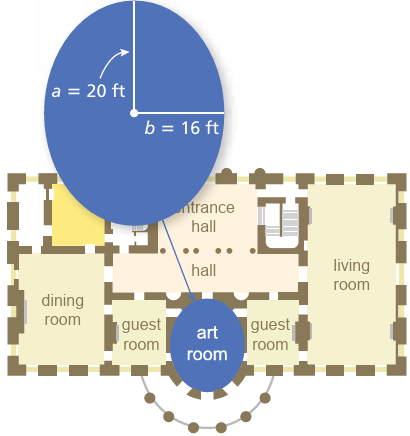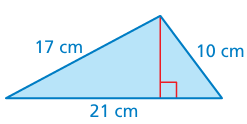SIMPLIFY RADICALS BY FINDING PERFECT SQUARE FACTORS
Subscribe to our ▶️ YouTube channel 🔴 for the latest videos, updates, and tips.
How to simplify radicals using the perfect square method ?
Step 1 :
Decompose the term that we have inside the radical sign as product of the nearest perfect square.
Step 2 :
We will get two parts inside the radical, one must be the perfect square, another be non perfect square.
Step 3 :
Decompose the non perfect square as much as possible, and simplify.
Simplify each expression by factoring to find perfect squares and then taking their root.
Problem 1 :
√75
Solution :
Find the perfect square factor of 75.
= √75
= √(25×3)
= √(5×5×3)
= 5√3
So, the answer is 5√3
Problem 2 :
√16
Solution :
Find the factors of 16.
= √16
= √(4×4)
= 4
So, the answer is 4.
Problem 3 :
√36
Solution :
Find the factors of 36.
= √36
= √(6×6)
= 6
So, the answer is 6.
Problem 4 :
√64
Solution :
Find the factors of 64.
= √(8×8)
= 8
So, the answer is 8.
Problem 5 :
√80
Solution :
Find the perfect square factor of 80.
= √80
= √(16×5)
= √(4×4×5)
= 4√5
So, the answer is 4√5.
Problem 6 :
√30
Solution :
We cannot decompose 30 as a product of perfect square, we decompose 30 as
= √(10×3) (or) √(6×5) (or) √(12×5)
We will not get any product of two same terms, so the result is it cannot be simplified further.
Note :
To find the exact value, we can use calculator.
Problem 7 :
√8
Solution :
Find the perfect square factor of 8.
= √8
= √(4 × 2)
= √(2 × 2 × 2)
= 2√2
So, the answer is 2√2.
Problem 8 :
√18
Solution :
Find the perfect square factor of 18.
= √18
= √(9 × 2)
= √(3 × 3 × 2)
= 3√2
So, the answer is 3√2.
Problem 9 :
√32
Solution :
Find the perfect square factor of 32.
= √32
= √(16 × 2)
= √(4 × 4 × 2)
= 4√2
So, the answer is 4√2.
Problem 10 :
√12
Solution :
Find the perfect square factor of 12.
= √12
= √(4 × 3)
= 2√3
So, the answer is 2√3.
Problem 11 :
√108
Solution :
Find the perfect square factor of 108.
= √108
= √(36 × 3)
= √(6 x 3 × 3)
= 6√3
So, the answer is 6√3.
Problem 12 :
√125
Solution :
= √125
= √(25 × 5)
= √(5 x 5 × 5)
= 5√5
So, the answer is 5√5.
Problem 13 :
√50
Solution :
= √50
= √(25 × 2)
= √(5 x 5 × 5)
= 5√2
So, the answer is 5√2.
Problem 14 :
√175
Solution :
= √175
= √(25 × 7)
= √(5 x 5 × 5)
= 5 √7
So, the answer is 5√7.
Problem 15 :
The circumference C of the art room in a mansion is approximated by the formula C ≈ 2π √[a2 + b2 /2]. Approximate the circumference of the room.

Solution :
C ≈ 2π √[a2 + b2 /2]
Where a = 20 ft and b = 16 ft
Applying these values, we get
C ≈ 2π √[202 + 162 /2]
≈ 2π √[(400 + 256) /2]
≈ 2π √[656/2]
≈ 2π √328
Decomposing √328, we get
≈ 2π √(2 x 2 x 2 x 41)
≈ 4π √(2 x 41)
≈ 4π √82
Problem 16 :
26 a perfect square?
Solution :
= √26
By decomposing √26, we get
= √(2 x 13)
Since we dont have two same numbers inside the square root, it is not factorable. Then it is not perfect square.
Problem 17 :
Can the square of an integer be a negative number? Explain.
Solution :
By squaring the negative number, we will get positive number as result. Because negative x negative will give positive as result.
Problem 18 :
Does √256 represent the positive square root of 256, the negative square root of 256, or both? Explain.
Solution :
√256 = √(16 x 16)
= ±16
So, for both.
Problem 19 :
The area of the base of a square notepad is 9 square inches. What is the length of one side of the base of the notepad?
Solution :
Area of base of square notepad = 9 square inches
side x side = 9
(side)2 = 9
side = √9
side = √(3 x 3)
= 3 inches
So, one side of the base of the notepad is 3 inches.
Problem 20 :
The kinetic energy K (in joules) of a falling apple is represented by K = v2/2 , where v is the speed of the apple (in meters per second). How fast is the apple traveling when the kinetic energy is 32 joules?
Solution :
K = v2/2
Here k = 32 joules
32 = v2/2
32(2) = v2
v2 = 64
v = √64
v = √(8 x 8)
v = 8
So, speed of the apple is 8 meters per second.
Problem 21 :
The area of the triangle is represented by the formula A = √s(s − 21)(s − 17)(s − 10) , where s is equal to half the perimeter. What is the height of the triangle?

Solution :
Here side lengths are 21 cm, 17 cm and 10 cm
Let a, b and c be the sides of the triangle.
a = 21, b = 17 and c = 10
s = (a + b + c)/2
= (21 + 17 + 10) / 2
= 48/2
= 24
Given that A = √s(s − 21)(s − 17)(s − 10)
Applying the value of s, we get
= √24(24 − 21)(24 − 17)(24 − 10)
= √24 x 3 x 7 x 14
= √2 x 2 x 2 x 3 x 3 x 7 x 2 x 7
= 2 x 2 x 3 x 7
= 84 square cm
Subscribe to our ▶️ YouTube channel 🔴 for the latest videos, updates, and tips.
Recent Articles
-
Finding Range of Values Inequality Problems
May 21, 24 08:51 PM
Finding Range of Values Inequality Problems -
Solving Two Step Inequality Word Problems
May 21, 24 08:51 AM
Solving Two Step Inequality Word Problems -
Exponential Function Context and Data Modeling
May 20, 24 10:45 PM
Exponential Function Context and Data Modeling